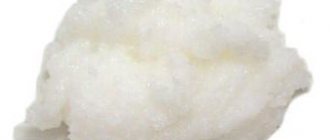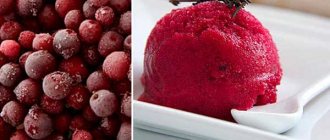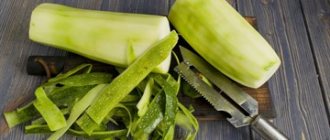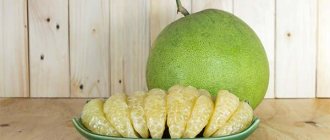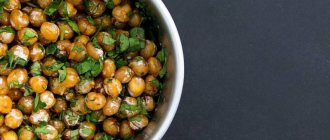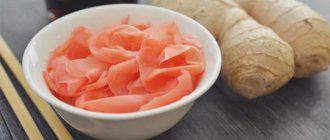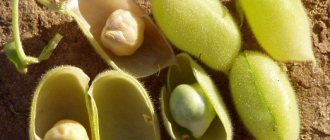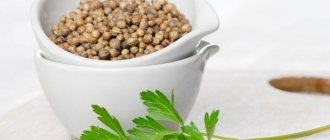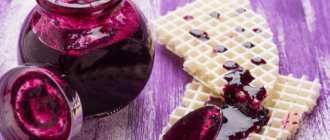The liquid contains many useful substances: proteins, milk sugar, mineral components, lecithin and vitamins. Fat content does not exceed 0.5%
The product is often added to dough when baking bread and other products. Thanks to this, the baked goods turn out fluffy.
Whey can be included in cold soups and light salad dressings, as it is considered a good alternative to sour cream. It is allowed to completely or partially - depending on the recipe - replace heavy cream, kefir or sour cream.
Buttermilk: recipe
If you can’t buy the real product, you can make it yourself. Making buttermilk at home is easy. The technology is as follows:
- You need to take two glasses of skim milk.
- Add a teaspoon of lemon juice to it (the latter can be replaced with the same volume of vinegar).
- Stir the milk and place in a warm place for 15 minutes.
Buttermilk prepared according to this recipe can be used both for adding to baked goods and simply for drinking.
The benefits and harms of buttermilk
Due to its low fat content, the drink is classified as a dietary product. It can be introduced into the diet of a person losing weight, replacing yoghurts or kefir.
What else can serum be useful for? Here is a list of the main features of the drink:
- normalizes “bad” cholesterol levels. To stabilize cholesterol levels, you need to drink a glass of low-fat cream every day. They will not allow cholesterol to settle on the walls of blood vessels, forming plaques;
- prevention of heart disease. The product will be useful as a prophylactic for ischemic heart disease and various heart rhythm disorders;
- strengthening the walls of blood vessels. Thanks to this feature, the drink helps to a certain extent with hypertension;
- stimulation of metabolic processes. The substances included in the product help increase the speed of all metabolic processes that take place in the human body;
- restoration of liver cells. Buttermilk prevents the liver from becoming fat and also alleviates cholecystitis;
- normalization of intestinal microflora. The serum contains many beneficial microorganisms. Cottage cheese prepared on this basis will be useful for increased gas formation and intestinal colic. In addition, the product is a good laxative;
- normalization of the nervous system. Regular consumption of the product has a beneficial effect on the human nervous system.
But the drink can be harmful in the following cases:
- with lactose intolerance;
- during diarrhea;
- increased acidity of gastric juice.
Only a fresh product can bring benefits to a person. It is better not to use buttermilk that has been frozen or heat-treated for food.
Buttermilk cheese
Buttermilk (liquid from churned cultured butter) is poured into a saucepan and heated to 70 * C, it is maintained for at least 1 hour, after which it is still kept on low heat. Then the mass is transferred to a bag made of rough canvas and hung so that the liquid drains. As soon as the whey has drained (after 3 hours), the dense mass is taken out of the bag. To make the whey drain faster and the cheese to gain strength, add a light weight.
When heating, do not stir so that the casein does not combine with the whey. Pour milk and a little cream into the cooled mass. Mix everything with a wooden spoon, add cumin or garlic to taste. You can use skim milk instead of buttermilk, but it makes cheese less tasty.
Homemade cheese
The skim milk is fermented. The resulting product is kept on low heat for at least 15 minutes. As soon as it rises on the sides, stir. As the temperature rises, stir more vigorously (but not above 40 °C). The mass is placed in a canvas bag and hung or placed under a press, when the liquid drains, salt, add cumin or garlic and crush until a lump-free mass is obtained, from which cheeses 6-7 cm in size are formed and left for a short time in a well-ventilated indoors on straw. After drying, take it to a warm, damp closet or pantry, where a crust forms on the cheese. Stores in a clay pot under cheesecloth for up to 4 months.
Good to know
— You need to keep milk in a container with a closed lid, as it quickly acquires foreign odors.
— The shelf life of dairy products in home refrigerators at a temperature of +2 ... +6 ° C is as follows (days): butter - 14-20, cheese - 7-10, cottage cheese and products made from it - 3, yogurt, sour cream, etc. - 3 , pasteurized milk, cream - 2.
— For the dough, it is better to use slightly warmed raw milk.
— On the top shelves of the refrigerator, closer to the evaporator, you need to keep milk, cream, sour cream, kefir.
— Dairy products should be stored in enamel or glass containers, in a dark and cool place.
— Oil absorbs odors. It should be stored in parchment, polyethylene or kept in a closed oil dish.
— If there is no refrigerator, the oil can be placed in a glass or enamel container and filled with cold salted water, changing the water twice a day.
— If there is no refrigerator, then the container with dairy products should be placed in a wider bowl with water, covered with a wet napkin, the edges of which should be dipped in water.
- Dry cheese can be made soft and fresh by keeping it in milk for some time.
— Store the cheese in the refrigerator, wrapped in foil or plastic to prevent it from drying out.
— Without refrigeration, store cheese in a cloth moistened with salt water.
— Sour cream whips better if you add a little raw egg white to it.
- Milk containers must first be rinsed with cold water, then washed with hot water.
— Milk is a good product for facial skin care. Wipe the skin with a cotton swab soaked in milk (preferably in the morning).
— Cheeses are stored in brine: take 130-150 g of salt per 1 liter of water or whey, first wash in this brine and dry. Then they put it in a bowl, put a weighted board on top and fill it with brine.
Check the condition of the product daily; if a film appears on the surface of the brine, remove it. If the surface of the cheese becomes slippery, the brine is not strong enough. If there is a lot of salt in it, the cheese will have a rough consistency.
Buttermilk is a healthy, dietary and low-calorie dairy product. However, for us, cooks, it is valuable because it allows us to turn ordinary dough into delicious one with minimal effort and investment. You can use buttermilk to make pancakes, pies, cakes, bread and pancakes - in general, almost any dough. And it will certainly delight you with its taste and luxurious texture. Buttermilk baked goods are airy and porous, with a characteristic pleasant creamy flavor.
But let's figure out what buttermilk is. Buttermilk in the classical sense is a dairy by-product. This is the liquid that is released when cream is whipped into butter. Of course, in everyday life, creaming butter to produce the 120-200 ml of buttermilk needed for most recipes is not very productive.
Therefore, today I want to offer you some simpler and faster options for making buttermilk at home. These buttermilk options come together in minutes, require no extra effort, work well in any recipe that calls for buttermilk, and best of all, they always allow you to make exactly the amount of buttermilk you need for a specific recipe. Shall we begin?!
Option 1:
prepare buttermilk using yogurt and milk.
All you need to do is dilute the yogurt with milk in the following proportions: 2/3 of the required volume - yogurt, 1/3 - milk. If you are using very thick yogurt, such as Greek or full-fat homemade yogurt, the proportions can be equal - ½ yogurt and ½ milk. You can also use sour cream instead of yogurt.
The consistency of the finished buttermilk should be fluid, with the product enveloping a spoon.
Option 2: Buttermilk made from milk.
To make this version of buttermilk, you only need two ingredients: milk and lemon juice (or white wine vinegar).
Heat the milk to a temperature of 36-37 degrees. To make sure the temperature is correct, place a drop of warm milk on the back of your hand. If milk is not felt on the skin, the temperature is appropriate.
Measure out the required amount of milk and add a proportional amount of lemon juice or vinegar. Basic proportions – 180 ml of milk per 1 tbsp. lemon juice or vinegar.
Mix the ingredients and leave the mixture for 15 minutes.
Homemade buttermilk is ready. You can start preparing delicious homemade baked goods!
After reading the recipe, did you think that the resulting product looked suspiciously like kefir?! This thought came to me too! Indeed, kefir and buttermilk are similar, but they are still different products. Unlike kefir, buttermilk has a more delicate, creamy taste. Also, buttermilk lacks the sourness characteristic of kefir, which is often felt in finished baked goods.
Popularly, but scientifically, buttermilk is a product obtained in the process of churning butter. The liquid released from the mass is also called skim cream, as it contains only 0.5% fat. Among dairy and fermented milk products, buttermilk is the most useful product for people trying to maintain weight and maintain a slim figure.
The milk derivative, like the raw material itself, contains protein and minerals.
Buttermilk is used as a raw material for the industrial production of other dairy products: low-fat cottage cheese, dietary soft cheeses, amateur milk, fermented milk dessert drinks, and so on.
How to make buttermilk cottage cheese at home?
» Cooking »
Loading…
Question for experts: what is buttermilk? I found a recipe for making cottage cheese from buttermilk, but I don’t know where to get it
Best regards, Galina Rodionova
Best answers
The curd is hung to catch excess glass. Anything glass is buttermilk. It makes the best pancakes
Buttermilk is skim milk. In the store there is, for example, 1 percent.
Buttermilk is a product of processing cream into butter, strictly speaking - whey))
During the Soviet Union, I drank buttermilk in Estonia. It's something like kefir. I remember the price - 7 kopecks per liter. This is three times cheaper than milk and kefir.
Buttermilk is skim milk, leftovers from the production of butter, (cream or cottage cheese) and you can’t make anything out of it.
It is eaten in its natural form or processed into fermented milk products, drinks, and is included in some types of dietary cheeses.
Dry and condensed buttermilk is used in the confectionery and baking industries.
Buttermilk is fed to young farm animals.
Buttermilk is a traditional ingredient in Irish soda bread and is often used in muffins.
As a result of the reaction of the acid with baking powder and baking soda, carbon dioxide is released, and the bread rises and becomes fluffy. Thanks to the use of buttermilk, scones, cakes and pancakes are the most tender. Buttermilk can also be added to cold soups and salad dressings, and can easily replace richer sour cream.
These are production wastes that are transported to state farms for feeding calves... but now all our wastes have become the most valuable products...
If you heat sour milk, the casein curdles and you get cottage cheese. But what’s left is buttermilk. You can’t get cottage cheese from it.
Buttermilk is the liquid left over after creaming butter. That is, low-fat cream. After preparing cottage cheese or cheese from milk, whey remains. In the photo in the glass on the right there is buttermilk, on the left there is milk.
-answer
This video will help you figure it out
Answers from experts
I did it like this: pour sour milk (yogurt) into an enamel bowl, heat it over very low heat, stirring until it curdles further 3-4 layers of gauze in a suspended state in the morning, the cottage cheese is ready to eat its subtleties that are revealed in the process The cottage cheese turns out tender and tasty In short create, invent, try
Whatever % you do, that’s how it will be. Absurd question.
The fat content depends on the fat content of the milk. Milk from a cow is best. You need to let it acidify until it turns into kefir, then put it on low heat slightly, not reaching a boil. The milk is divided into two parts.
It is necessary to strain the contents through cheesecloth, preferably hang it somewhere so that excess liquid can drain. After a few hours, the cottage cheese is ready. If you want more fat, add sour cream and mix.
Bon appetit!
The milk should be heated to approximately fresh temperature, add the starter - sour cream, yogurt, or just add a crust of black bread. You need to ferment it in the container in which you are going to cook it. You should get a dense clot, but do not overcook so that it does not become sour. It is better to place the pan not on an open fire if it is a gas stove, but on a flame divider.
It is necessary to heat slowly, do not interfere, but only move it away from the edges with a slotted spoon. Curdling occurs at temp. approximately 40-42 degrees, otherwise you can overcook and get hard cottage cheese. I won’t tell you the cooking time, it depends on many factors, but it’s better to let the cottage cheese be softer.
When the cottage cheese is ready, leave it until it cools completely in a cool place, then put gauze in a colander, if it is very thin, then in more than one layer, let the whey drain. Fat content depends on the fat content of the original product. i.e. milk. If this is homemade milk, then before making cottage cheese, partially remove the top of the curdled milk; this will be sour cream. Leave the entire inch, i.e.
Milk fat is not practical - it will go into the whey. Cottage cheese is made from skim milk and buttermilk. This will already be low-fat cottage cheese.
The fat content of the milk is the same as the cottage cheese. if you need fattier and tastier milk, you can first ferment the milk with sour cream (add sour cream to warm milk, leave it in the room overnight, leave the lid on) when you get homemade kefir, cook cottage cheese.
The main thing is on the slowest heat, and I try to practically not interfere, once carefully along the bottom so as not to burn - then the cottage cheese will be in large plates, and not in small crumbs. and also - I let it cool in the whey to room temperature, then just put it in gauze and squeeze it out.
The whey is also tasty and very beneficial from cottage cheese.
Buttermilk. The word “churning,” which is rarely used now, means churning butter from cream or sour cream. The resulting cloudy, slightly sour liquid is called buttermilk. Its chemical composition is similar to whey, obtained by curdling milk for cheese or cottage cheese.
When we carefully studied the composition of these products, it turned out that many biologically active substances were concentrated in them, and not in the oil.
In addition, buttermilk contains up to 3.3 g% protein, 1.0 g% fat, 4.7 g% milk sugar - lactose, 0.7 g% free organic acids (calorie content - 40 kcal per 100 g of product); 50 mg% potassium, 30 mg% sodium, 120 mg% calcium, 18 mg% magnesium, 88 mg% phosphorus, 0.1 mg% iron; 0.03 mg% vitamin B, 0.15 mg% vitamin B2, 0.14 mg% vitamin PP and even some amounts of vitamin C. There is a relatively large amount of lipotropic substances in buttermilk - choline and lecithin. Therefore, buttermilk itself and dishes enriched with it contribute to the formation of relatively easily soluble cholesterol compounds, and the walls of blood vessels with such nutrition become more elastic.
Buttermilk cottage cheese is a dish that seems to be specially created for elderly and senile people and, of course, for those who are prone to obesity.
There is also evidence that buttermilk curd is useful for intense mental work.
Currently, consumption of skim milk and buttermilk in many industrialized countries accounted for 35% of total milk consumption. This percentage is increasing every year.
By the way, the so-called peasant butter is prepared with the addition of buttermilk.
you can bake pancakes and pancakes on it, you can even leave it to sour and it will be a non-fat yogurt - healthy like all dairy products
Despite the low calorie content of buttermilk (33-36 kcal per 100 g), its advantage is its rather high content of biologically highly active substances - phospholipids, which have an anti-sclerotic effect. The structure of buttermilk protein is similar to some proteins in human blood. Fats are represented by linoleic, linolenic and arachidonic polyunsaturated fatty acids.
These substances not only protect the liver from obesity, but also regulate cholesterol metabolism, thus strengthening the tissue of the walls of blood vessels and increasing their elasticity. Lecithin contained in buttermilk binds blood cholesterol, preventing its accumulation and sedimentation on the walls of blood vessels. Choline also has a very beneficial effect on the nervous system and liver.
Buttermilk prevents fermentation processes in the intestines and thus prevents the intensive development of putrefactive microorganisms, accompanied by autointoxication resulting from the action of putrefactive decay products in the intestines and increased flatulence.
If you add acidophilus starter to buttermilk, fermentation will result in a product that is effective against a tendency to be overweight, bloating and constipation.
Cottage cheese is also made from buttermilk, suitable for people who are prone to obesity and the elderly. This cottage cheese is rich in protein, lecithin and other beneficial substances. In natural peasant butter, the percentage of residual buttermilk is quite high, it is very useful, although its shelf life is short.
Source: https://dom-voprosov.ru/kulinariya/kak-prigotovit-tvorog-iz-pahty-v-domashnih-usloviyah
Useful properties of buttermilk
The product contains a lot of proteins, a wide variety of vitamins (in particular: A, group B, C, E, K, H), and very little fat. Note that there is just enough fat in the composition to ensure normal absorption of fat-soluble vitamins.
The biggest advantage of buttermilk is its high percentage of phospholipids. They are very important for ensuring a balanced cholesterol-fat metabolism.
For example, buttermilk-based curd contains healthy proteins, lecithin and much more. The strength of these components is in the normalization of the gastrointestinal tract and the quality of the therapeutic effect on a number of gastrointestinal diseases.
Lactose (milk sugar) in buttermilk is present at a level of 5%. This is enough to provoke the necessary fermentation processes in the stomach and prevent the possibility of the development of putrefactive processes (for example, such as during flatulence).
Calorie content
This fermented milk product is quite low in calories - only 41 kcal per hundred grams of liquid. Energy value of the product: proteins – a little more than 3%, fats – 1%, carbohydrates – almost 5%.
Look at how many different pancake recipes there are. And pancakes with milk, and pancakes with sour cream, and liver pancakes, and the same ones, but with cabbage... You’ll be tired of listing them. How can you be original here? However, if desired, this is possible. Today we will try an original recipe called quick buttermilk pancakes. I think it will be a wonderful variation of the usual taste.
A little theory
What is buttermilk? It is a by-product of dairy production. It turns out buttermilk when making butter. The fat is removed from the raw material, but the milk base remains. That's why it's called buttermilk. Although this product is indeed a by-product, it has a certain value, since it contains a lot of vitamins, minerals, and biologically active substances. Agree, it would be stupid to simply dispose of buttermilk as waste.
That is why buttermilk is widely processed into other valuable fermented milk products. On its basis, many different culinary products are made, from traditional Irish bread to traditional Russian ones. Moreover, condensed buttermilk is even made by analogy with condensed milk.
It's time to say that pancakes are made best from buttermilk. The fact is that lactic and other acids contained in buttermilk react perfectly with ordinary baking soda and baking powder. As a result of this reaction, a large amount of carbon dioxide is obtained, that is, carbon dioxide, the bubbles of which, saturating the dough, make it special. That is why quick buttermilk pancakes turn out to be unusually delicate in taste, despite the short cooking time.
How to make bread with yogurt
Ingredients:
- Flour 500 gr.
- Yogurt or buttermilk 400 ml.
- Salt 0.5 tsp
- Soda 1 tsp
- Flour for sprinkling
Preparation
- Mix flour with salt and soda.
- Sift or stir to evenly distribute the baking soda and salt and remove any lumps.
- Add Buttermilk or Yogurt.
- Gently stir with your fingers to form a loose lump of dough.
- No need to knead, just combine everything into a lump.
- Place on a baking sheet and bake in the oven at 210 C for 40 - 50 minutes.
A small excursion into history. Buttermilk is an incredibly healthy product that separates from the butter when whipping cream. In essence, it is low-fat cream, rich in calcium and protein, vitamins and other microelements. Buttermilk has been used since ancient times as a medicinal drink for children, in the treatment of obesity and diseases of the digestive system. It was always present on the royal tables, was stored better than milk, and was used in baking, medicine, and the preparation of cheeses and fermented milk products. Buttermilk is sometimes called whey, which is formed when milk sours. But this is already a fermented milk product.
Butter:
Ingredients:
1. 500 ml cream. To make this bread, you need to make homemade butter. It's very easy if you have a food processor. You will need 500 ml of homemade cream. Store-bought ones are also suitable (fat content should be more than 30%), but this is not the best option). I made butter from homemade and store-bought cream. So, from store-bought ones, buttermilk comes out the same color as milk. And homemade ones are more transparent, like milk diluted in half with water. The cream should be whipped in a food processor using a whisk, which is usually used to beat egg whites. The thicker and fresher the cream, the faster the butter will separate. Take the food processor to another room and feel free to go about your business - the oil will prepare itself. After about an hour, the oil forms a large lump. Strain the buttermilk, put the butter in a mold and put it in the refrigerator. All!
Now we bake bread.
Ingredients
: 1. 400 ml buttermilk;
2. 700 g flour; 3. 120 g butter; 4. 50 g sugar; 5. 2 tsp. salt; 6. 1 tsp. dry yeast. Preparation
: 1. Heat buttermilk, 90 grams of butter, sugar in a saucepan (up to 40-45 ͦC). 2. Mix half the flour, yeast and salt in a mixing bowl. Pour in the buttermilk mixture and knead into a dough. 3. While kneading further, gradually add the remaining flour. 4. The dough becomes very elastic, soft, and does not stick to your hands. We form a ball, cover with a towel and let rise until doubled (30-60 minutes, depending on the air temperature). 5. Knead the risen dough again, divide in half, form 2 loaves and leave to rise for another 30 minutes. 6. Preheat the oven to 180 ͦC. Before putting the loaves in the oven, make cuts (up to 1 cm deep) and brush with the remaining melted butter. Bake for about 30 minutes until golden brown. 7. Cool the bread on a board, under a towel. Cut when cool. This bread can last for more than two weeks and remain soft. It makes fantastically delicious croutons (for example, for cream soup).
Buttermilk bread - the most delicate and tasty white bread ever! At first, the short story about buttermilk. Buttermilk is very healthy product, which separates from the butter, during whipping the cream. Per se, it's skimmed cream, rich in calcium, protein, vitamins and other microelements. From the earliest times it was used as healing drink for children, treatment for fatness and digestive organs diseases. It was easier to keep buttermilk, than milk, to use it in medicine, bakery foods, cheese manufacturing, etc. Homemade butter:
Ingredients
: 1. 500 ml of heavy cream.
Pour the cream in a cup of food processor or blender. Please avoid ultra-pasteurized cream. Process until the butter separates. Strain off the buttermilk in a saucepan. Press butter into a small bowl. That is all. Buttermilk bread: Ingredients
: 1. 400 ml of buttermilk;
2. 700 gr of all-purpose flour; 3. 120 gr of butter; 4. 50 gr of sugar; 5. 2 teaspoons of salt; 6. 1 teaspoon of dry yeast; Directions
: 1. Warm (to the 100 °F) the buttermilk, 90 gr of butter, sugar in a saucepan. 2. Mix half of the flour, yeast and salt. Add the mixture of buttermilk and knead dough. 3. Little by little add the rest of the flour, proceed kneading. 4. Form the ball, cover with a towel and allow the dough to rise during 30-60 minutes. 5. Knead the dough one more time, divide each dough in half and form two loafs. 6. Allow the dough to rise during 30 minutes. 7. Preheat an oven to 360 °F. Before baking, make shallow incisions greased with melted butter. 8. Bake it for 30 minutes or until gold-yellow crust. 9. Cool the bread completely before cutting it, so just put it for at least two hours on a breadboard under the towel. This bread will be good for more than two weeks. The rusks made from this bread are fantastic! You can use them for cream soup.
Many amateur bakers have probably tried pumpkin bread. It doesn’t matter whether it is baked in a bread machine, or, after kneading by hand, in the oven, the result is always pleasing: the result is fluffy, soft and bright bread, the pleasant aroma of which is reminiscent of rich sweet pastries. And all because pumpkin has a sweetish-spicy aroma and taste, which makes the bread look like dessert. But there is a way to make pumpkin bread even more tender and give it an even brighter, creamier taste - try using buttermilk to knead the dough.
It is quite fatty, sour and has a strong aroma of homemade cream. Buttermilk will add fat to the dough, helping it stay fresh longer, and will have a good effect on the development of gluten, which will provide a beautiful, soft crumb with an abundance of large pores. Plus, it has a strong, creamy flavor that pairs well with pumpkin.
This bread is not only tender in taste, but also very tender in texture. Both the crumb and the crust will be soft.
Yield of the finished product: 1 loaf weighing a little more than 700 grams Cooking time: about 4 hours
Preparation
Prepare a large enough pan in which we will mix all the ingredients needed for the dough. Let's do it first. To make it better mixed later, grind it with sugar and salt. Next, pour the buttermilk into the pan, this will be the liquid base for the dough. Stir a little and proceed to the most crucial moment.
We begin to pour a small handful of flour into the buttermilk and immediately stir well. This can be done with an ordinary culinary whisk, but it is better to use any of the culinary gadgets that will provide high-quality stirring, for example. It is very important to stir the resulting mixture so that there is not a single lump and the dough is absolutely homogeneous.
With the first or second handful of flour, add both baking soda and baking powder; they will not only provide excellent fluffiness to the dough, but will also help in stirring the flour. Don't overdo it with flour. For quick buttermilk pancakes, it should be a semi-liquid consistency and should flow freely over the surface. After the pancake dough is ready, we start frying.
Heat the vegetable oil in a frying pan. It is best to use high-quality, colorless and odorless sunflower oil for this purpose. The oil must be heated really well, that is, brought to a boil. As soon as it starts to sizzle and small bubbles appear, use a large tablespoon to pour several portions of dough into the pan. The amount of dough that ends up in the spoon is what is needed for one pancake. This way we will have several pancakes frying at the same time.
During the frying process, it is better not to leave the stove at all, as everything will happen quickly. On one side, fry the quick pancakes in buttermilk for about 2 - 3 minutes. We watch the edges of our pancakes and as soon as they have hardened, we immediately turn everything over at once. The surface of the quick pancakes should acquire a beautiful brown color, after which we remove them from the pan and immediately pour in a new portion. This is how we quickly and quietly get a solid stack of delicious quick buttermilk pancakes.
In conclusion, it must be said that, of course, pancakes are a completely self-sufficient dish and can be served without anything at all. However, think of quick buttermilk pancakes as a matrix from which you can make many different variations with different flavors. To do this, you just need to try different supplements.
For example, I suggest you experiment with the following combinations: pancakes with sour cream, pancakes with berries, quick buttermilk pancakes with jam, pancakes with syrup, pancakes with honey. Moreover, unsweetened versions of quick buttermilk pancakes are also quite possible. Try smoked pancakes, bacon pancakes, cucumber pancakes, toasted eggplant pancakes, cranberry pancakes, mushroom pancakes, and so on. I am absolutely sure that you will quickly find that wonderful combination that your household will like the most. Bon appetit!
Homemade bread without yeast
Provided that you have all the ingredients on hand and the oven is preheated to 210 degrees, it will take us a maximum of 50 minutes to complete everything! From kneading to crispy crust.
The kneading will generally take a maximum of 3 minutes. It's just a holiday. Well, at the end you will get incredibly tasty bread that will delight you and your loved ones.
Bread can be kneaded with either yogurt or buttermilk; kefir is not very suitable, the bread comes out heavy. But try it, maybe you can do it with kefir.
The secret of bread is simple. Just don't knead it for too long. Maximum 1 - 1.5 minutes until a lump of dough forms.
And that’s it, send it to the oven without hesitation. If you don't like the taste of soda, you can replace the soda with baking powder.
About six and a half to five thousand years ago, man learned to cultivate and cultivate wheat and barley. At that time, hand mills and mortars were invented, and the first baked bread was born. Archaeologists suggest that one day, while preparing grain porridge, part of it spilled out and turned into a golden cake. It surprised people with its pleasant smell, appetizing appearance and taste. It was then that our distant ancestors began to bake unleavened bread in the form of flatbread from thick grain porridge. Much more time passed and another miracle happened. The ancient Egyptians learned to make bread from fermented dough. It is believed that due to an oversight of the slave who prepared the dough, it turned sour and, in order to avoid punishment, he still risked baking cakes. They turned out fluffier, more rosy, and tastier than those made from unleavened dough.
